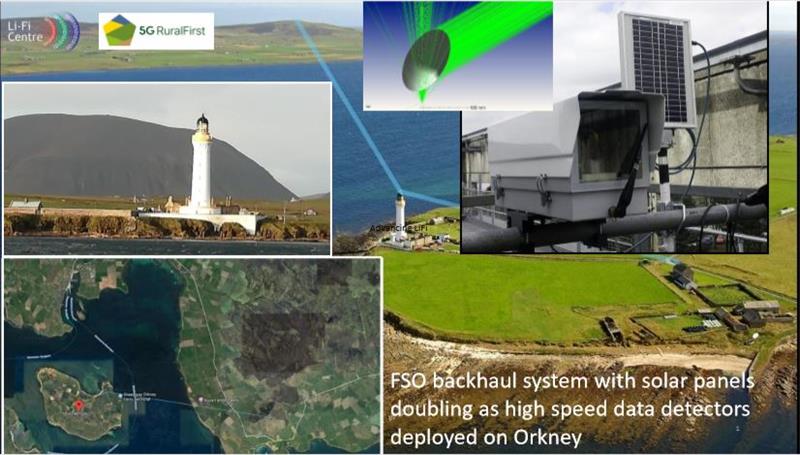Prior to the trial, which began in June, the island’s residents often saw speeds of below 2Mbps, but the LiFi network can consistently deliver speeds that are four times higher.
The network has both outdoor and indoor components – the outdoor system uses eye-safe infrared lasers for data transmission and the data is received and decoded by solar panels. Graemsay’s lighthouse serves as a communications hub, connecting each property with a dedicated outdoor LiFi link as a last mile solution. The indoor component consists of USB dongles that process tiny variations in the light coming from LEDs in the ceiling (through which the data from the outdoor network is transmitted to end user devices).
The trial will continue for the duration of the 5G RuralFirst project and was developed by The University of Edinburgh and pureLiFi Ltd. with support from Orkney Council, CloudNet IT Solutions and national bodies such as the Northern Lighthouse Board and the Department for Digital, Culture, Media and Sport (DCMS) through the 5G RuralFirst project.

“LiFi is a particularly sustainable solution to provide wireless connectivity and can be managed by residents themselves and combined with existing networks,” said Dez O’Connor, project CTO, 5G RuralFirst and business development manager, global service provider, Cisco. “As well as demonstrating the potential of advanced 5G technology to bridge the digital divide and better connect rural areas, 5G RuralFirst is trialling different technologies such as LiFi to solve the challenges posed by remote environments.”
Professor Harald Haas, director of the LiFi Research and Development Centre and CSO of pureLiFi, who coined the term LiFi in 2011, said: “Graemsay is in a complex position in terms of upgrading connectivity in the area, with just a copper landline to connect its residents and businesses. LiFi allows the area to use the light spectrum in two important domains: a) affordable last mile connectivity, and b) high-speed indoor wireless networking. Both are essential to overcome the rural divide which increasingly disadvantages rural communities. Graemsay is the first location which harnesses ordinary solar panels as outdoor broadband detectors and ordinary LED lamps in homes as wireless access points and can now take advantage of advanced connectivity like never before.”



